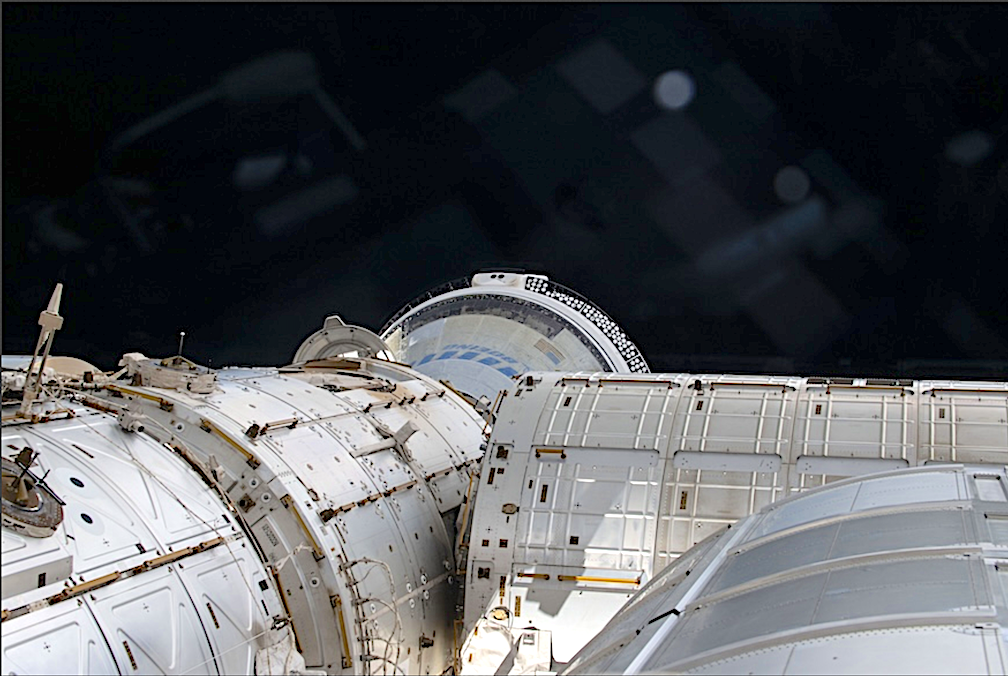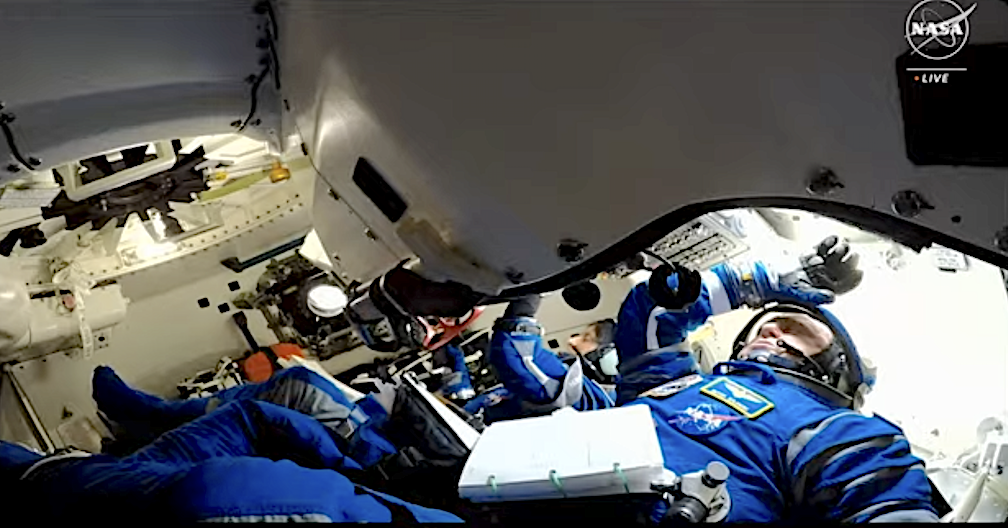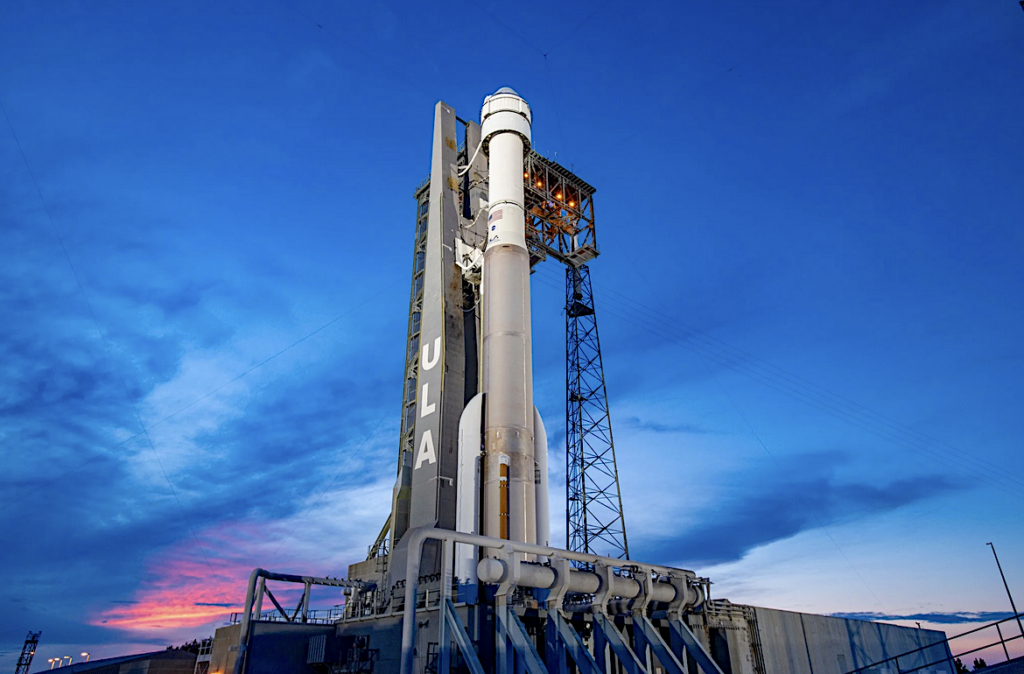
After three scrubs, two of which had the astronauts strapped in and ready to go, on June 5 NASA thought the hard part was over as the astronauts finally arrived at the International Space Station on June 6. This is where the saga began when on June 6 Starliner docking at the ISS was delayed for an hour because five of its 28 maneuvering thrusters had failed. The thruster that remained off failed for reasons different from the other four.
At 250 miles in space the folks at Boeing managed to get the propulsion system’s software to enable four of the thrusters to work and begin docking with the ISS.
The return to Earth of Boeing’s Starliner capsule is on indefinite hold pending results of new thruster tests and ongoing analysis of helium leaks that cropped up during the ship’s rendezvous with the International Space Station, NASA announced Friday.
Boeing’s Starliner SCRUBBED at T-3:50 with NASA astronauts offloading … again

JUNE 1: At 12:21 PM EST A long and nerve racking morning was appearing to lead up to the much delayed NASA Boeing Starliner mission. HOWEVER after many other issues the Ground Launch Sequencer held at 4 minutes. Not knowing what the problem is the launch is scrubbed. Careful attention to offloading the crew.
“From being a representative of Boeing, a representative of the Starliner program, it’s pretty painful to read the things that are out there,” he said. “We’re not stuck on ISS. The crew is not in any danger.”
Tense times with unanswered questions caused Boeing’s Starliner chief, Mark Nappi, to criticize news reports that said Starliner and its two astronauts are “stuck” in space. The press responded that NASA and Boeing should be more transparent about the mission since the original plan was to remain at the ISS for eight days.
While NASA and Boeing report that Starliner is capable of returning the astronauts to Earth should there be an emergency on the ISS, the capsule is not approved to fly home under normal, non-emergency circumstances until its thruster issues are solved or at least better understood after the upcoming tests. The mission has had management engineering and other issues that now have cost Boeing $1.5 billion in budget overruns.
‘We have decided to make a two-seater to use the space for the comfort and safety as much as possible, because 90% of rides are with one or two people.
A joint NASA-Boeing team focusing on the thruster issues have planned ground tests at the White Sands Missile Range in New Mexico to test fire the same kind of Starliner thrusters currently in space.
“This will be the real opportunity to examine the thruster, just like we’ve had in space, on the ground for detailed inspection,” NASA commercial crew chief Steve Stich told reporters during a news conference.
But agency officials insisted Starliner commander Barry “Butch” Wilmore and co-pilot Sunita Williams are not “stranded” in space.
ULA’s Boeing Starliner launch for NASA astronauts delayed again adding to the $1.5 billion over budget

“We don’t have a targeted (landing) date today,” Steve Stich, NASA’s Commercial Crew Program manager, told reporters during a teleconference. “We’re not going to target a specific date until we get that testing completed.
“So essentially, it’s complete the testing, complete the fault tree, bring that analysis into (the mission management team) and then have an agency-level review. And then we’ll lay out the rest of the plan from undock to landing. I think we’re on a good path.”
The problem for NASA and Boeing is that the Starliner’s service module, which houses the helium lines, thrusters and other critical systems, is discarded before re-entry and burns up in the atmosphere. Engineers will not be able to study the hardware after the fact and as a result, they want to collect as much data as possible before Wilmore and Williams head home.
While docked at the station, valves are closed to isolate the helium system, eliminating any additional leakage. But once Wilmore and Williams depart and head for home, the valves will be re-opened to repressurize the lines, or manifolds.
Stich said even with the known leaks, the spacecraft will have 10 times the amount of helium it needs to get home. But engineers want to make sure the leaks won’t get worse once the system is again pressurized.
“We’ll recreate that profile,” Stich said. “Then we’ll put a pretty aggressive profile in the thruster for (the undocking-to-re-entry) phase.
On Wednesday, a damaged Russian satellite in a slightly lower, more tilted orbit than the space station suffered a catastrophic “event” that produced more than 100 pieces of trackable debris. The nine member crew “sheltered in place” each aboard their respective spacecraft, to return to Earth in case of a damaging impact.
